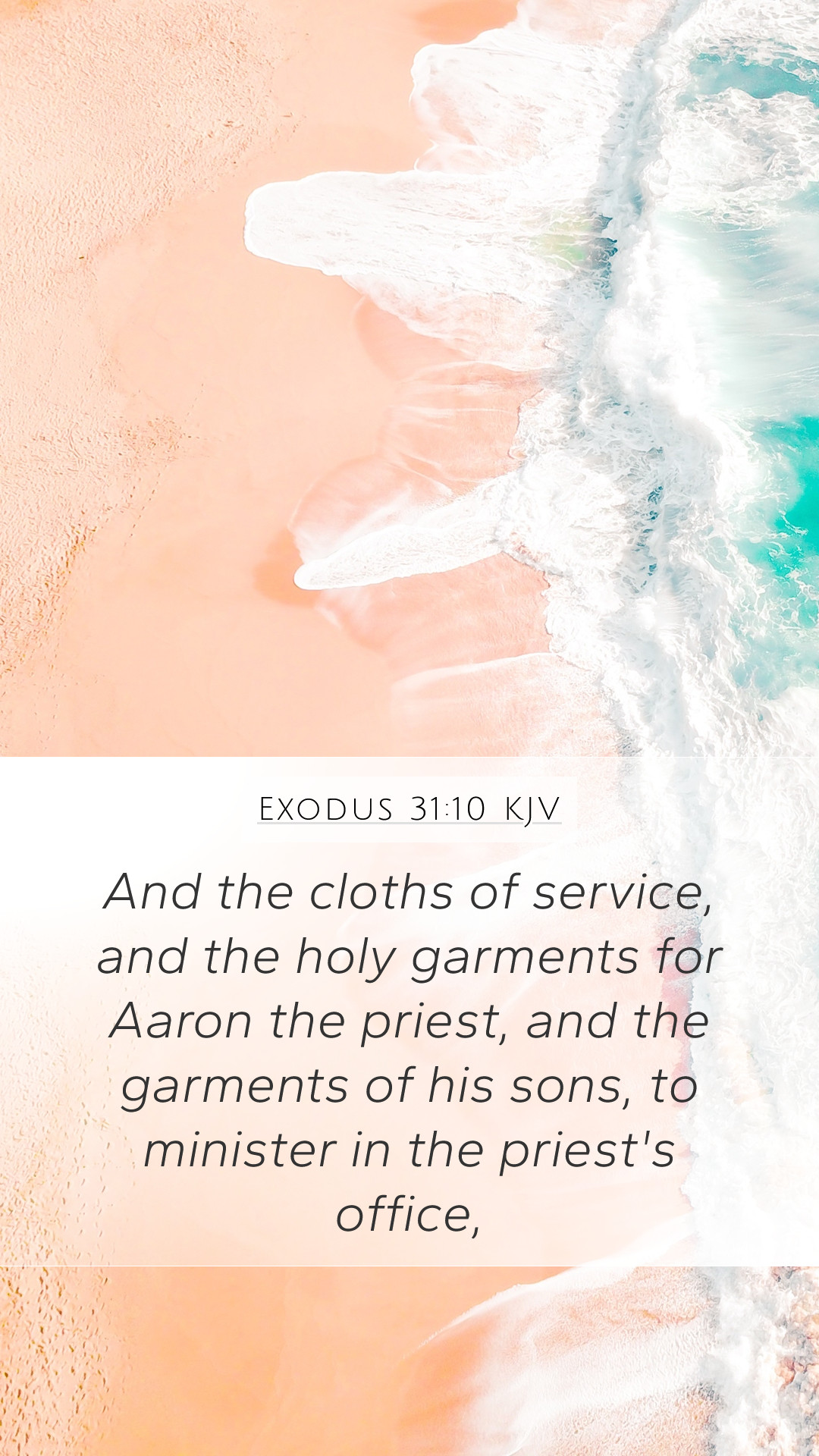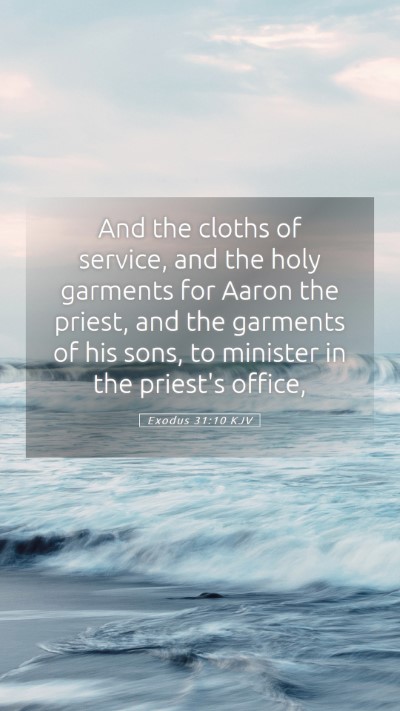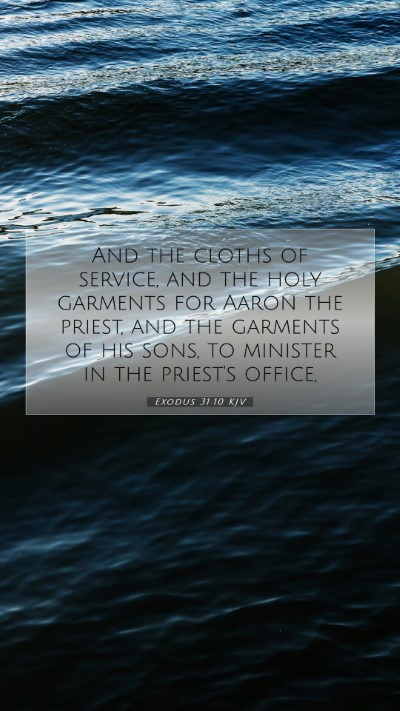Understanding Exodus 31:10: A Comprehensive Bible Verse Commentary
Exodus 31:10 states:
"And the cloths of service, and the holy garments for Aaron the priest, and the garments of his sons, to minister in the priest's office."
This verse emphasizes the importance of sacred garments and the service of the priests. In this exploration, we will provide a thorough interpretation that draws from esteemed public domain commentaries, including insights from Matthew Henry, Albert Barnes, and Adam Clarke, thereby enhancing our Bible verse understanding.
Contextual Overview
Before delving into the specific meaning of Exodus 31:10, it’s important to frame it within the larger narrative of the Book of Exodus. The chapters prior to this verse describe God's commands regarding the construction of the Tabernacle and the roles of the priests.
The garments referred to in this verse signify not just the attire of the priests, but also the holiness and purpose of their service to God. This aligns with the broader theme of Biblical exegesis that highlights the role of external representations of spiritual truths.
Insights from Commentaries
Matthew Henry's Commentary
Matthew Henry explains that the "cloths of service" are emblematic of the divine calling and the responsibilities bestowed upon the priests. He stresses that these garments were not merely functional but were integral to the worship and service of God, designed to reflect holiness and dedication. Henry emphasizes the distinction made by God in preparing dedicated items and personnel for sacred functions.
Albert Barnes's Notes
Albert Barnes highlights the significance of garments in establishing a priest's authority and role. According to Barnes, these garments served as an outward sign of their commitment to God and their responsibilities to the people. This commentary further sheds light on the idea that every detail was purposely designed to honor God and assist the priests in their sacred duties.
Adam Clarke's Commentary
Adam Clarke elaborates on the symbolic nature of the priestly garments, explaining that they were a means to differentiate the holy from the common. Clarke's analysis of the text enhances our understanding of the practical application of these verses, illustrating that the garments not only served a ceremonial purpose but also represented the moral and spiritual responsibilities of the priesthood.
Significance and Application
The call to service in this passage extends beyond the literal interpretation of priestly garments. It invites believers to reflect on their own 'garments' of service. Here are several applications drawn from this text:
- Holiness in Service: Just as the priests had dedicated garments, believers are called to serve God with purity and integrity.
- Understanding Roles: Recognizing the distinctions of roles within the body of Christ, as indicated by the unique duties of the priests.
- Symbolism of Garments: Reflecting on what attire represents in terms of one's commitment to God—spiritually dressing in righteousness.
- Preparation and Purpose: Understanding that every follower of Christ is called to prepare themselves for service in whatever roles they inhabit.
Bible Cross References
This verse can be connected with other significant scriptures that enhance its meaning:
- Leviticus 8:7-9: Details the consecration and garments of Aaron and his sons.
- Exodus 28:2-4: Outlines the specific garments to be made for Aaron the priest.
- 1 Peter 2:9: Illustrates the priesthood of all believers and the call to holiness.
Conclusion
Exodus 31:10 serves as a profound reminder of the importance of holiness and intentionality in our service to God. Through the insights gathered from biblical commentaries, believers are encouraged to delve deeper into the significance of their roles, duties, and attire—both literal and metaphorical—as they navigate their faith journeys.
As individuals seek deeper Bible verse interpretations and Bible study insights, it becomes essential to grasp not only the historical context of such passages but also their application in contemporary life. This holistic understanding equips all believers for effective service and increases their spiritual awareness.


